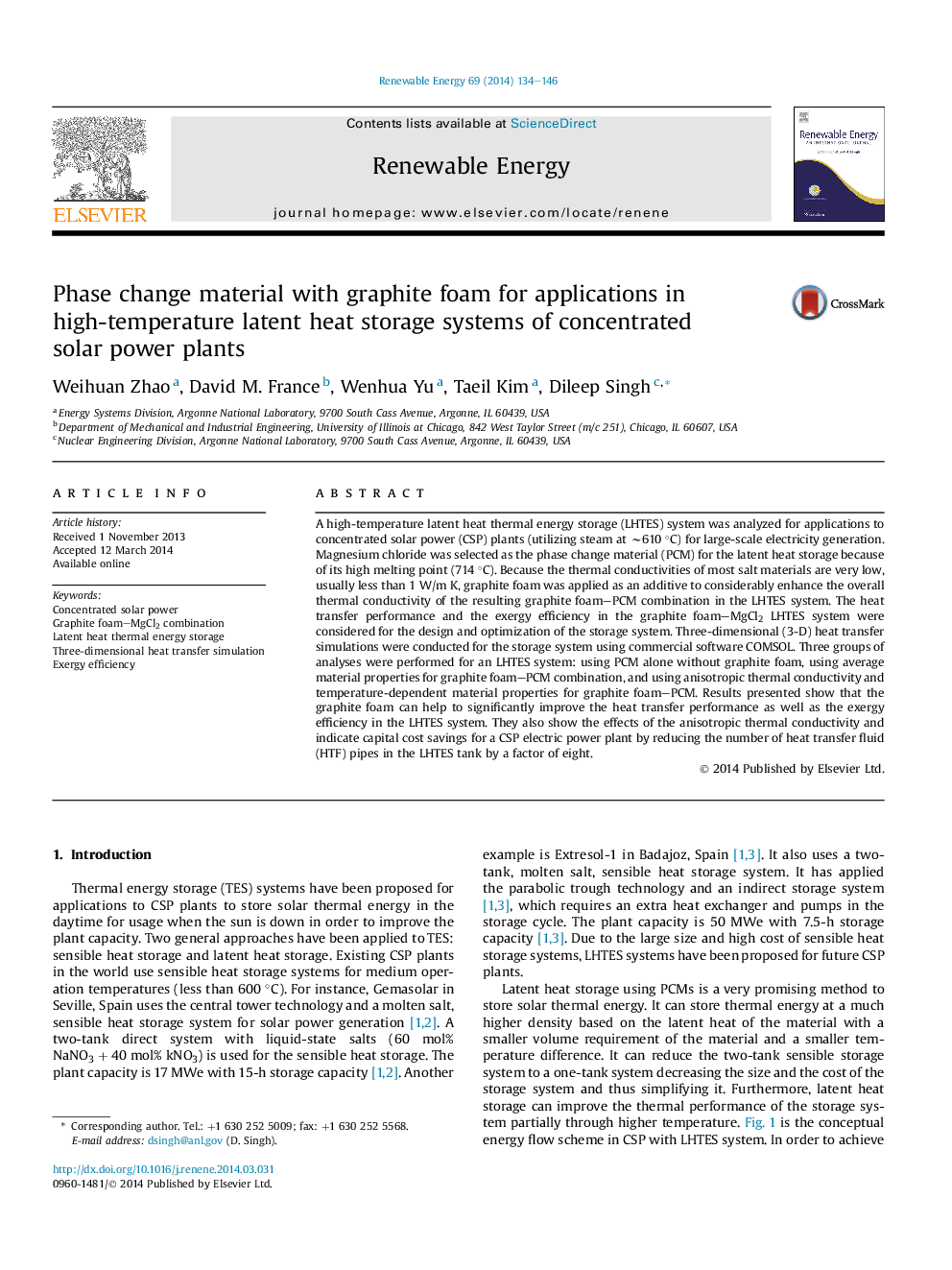| Article ID | Journal | Published Year | Pages | File Type |
|---|---|---|---|---|
| 6768163 | Renewable Energy | 2014 | 13 Pages |
Abstract
A high-temperature latent heat thermal energy storage (LHTES) system was analyzed for applications to concentrated solar power (CSP) plants (utilizing steam at â¼610 °C) for large-scale electricity generation. Magnesium chloride was selected as the phase change material (PCM) for the latent heat storage because of its high melting point (714 °C). Because the thermal conductivities of most salt materials are very low, usually less than 1 W/m K, graphite foam was applied as an additive to considerably enhance the overall thermal conductivity of the resulting graphite foam-PCM combination in the LHTES system. The heat transfer performance and the exergy efficiency in the graphite foam-MgCl2 LHTES system were considered for the design and optimization of the storage system. Three-dimensional (3-D) heat transfer simulations were conducted for the storage system using commercial software COMSOL. Three groups of analyses were performed for an LHTES system: using PCM alone without graphite foam, using average material properties for graphite foam-PCM combination, and using anisotropic thermal conductivity and temperature-dependent material properties for graphite foam-PCM. Results presented show that the graphite foam can help to significantly improve the heat transfer performance as well as the exergy efficiency in the LHTES system. They also show the effects of the anisotropic thermal conductivity and indicate capital cost savings for a CSP electric power plant by reducing the number of heat transfer fluid (HTF) pipes in the LHTES tank by a factor of eight.
Related Topics
Physical Sciences and Engineering
Energy
Renewable Energy, Sustainability and the Environment
Authors
Weihuan Zhao, David M. France, Wenhua Yu, Taeil Kim, Dileep Singh,
